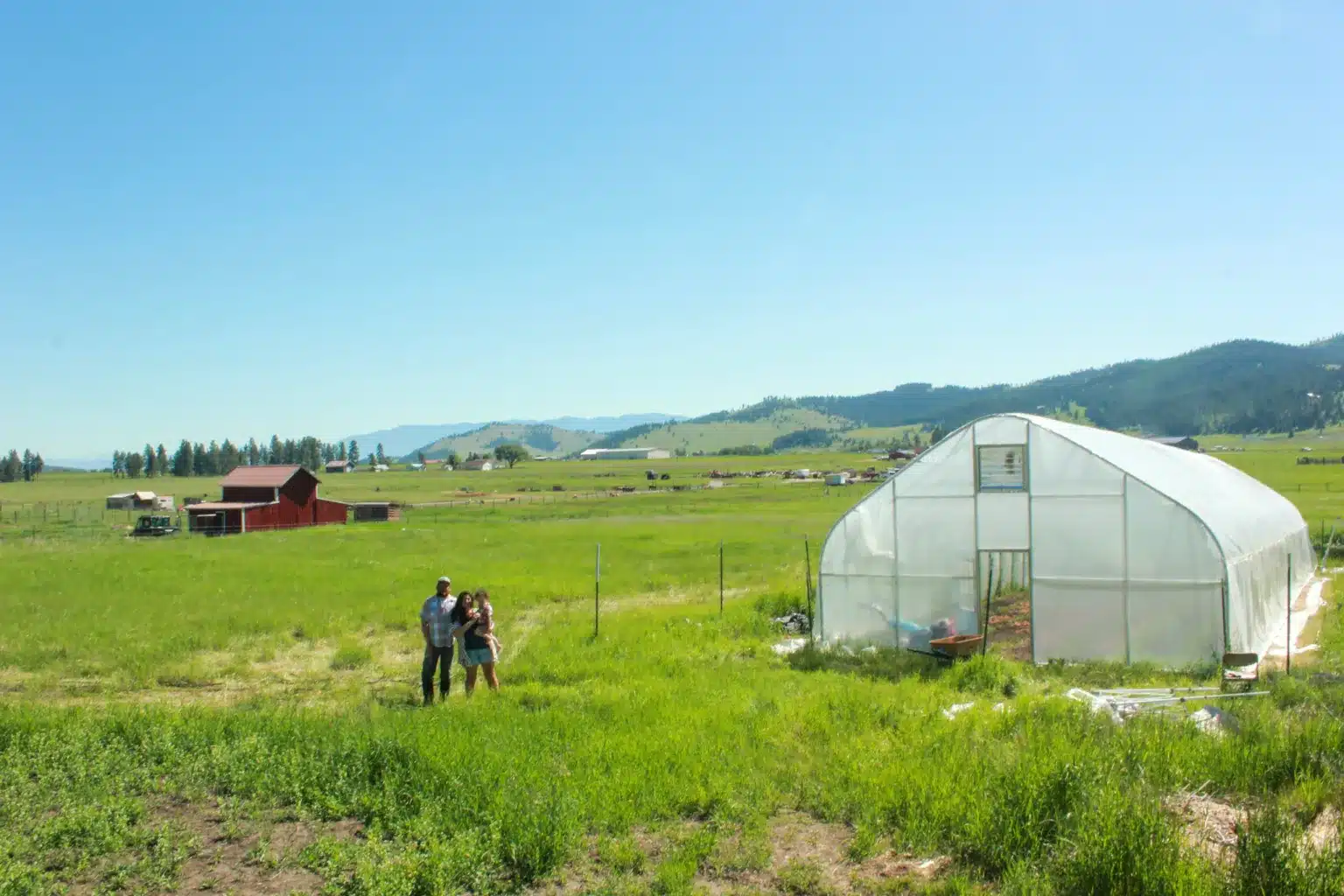The Art of Farming Mushrooms

We all understand the general idea of fruit and vegetable farming: you take a seed, you plant it into the ground, a plant grows from that seed and produces something edible. But how do you grow mushrooms, which produce microscopic spores instead of seeds? I visited Sun Hands Farm in Kalispell to learn all about the art of farming mushrooms.
First, let’s back up and refresh our memories on the basics of mushrooms. A mushroom is the reproductive part produced by some fungi (similarly to how an apple is the reproductive part of an apple tree). Except instead of producing seeds as an apple does, a mushroom produces microscopic spores.
In the wild, spores are released by mushrooms and carried by the wind or by animals. If they land on an ideal growing surface (called a substrate), such as wet wood or soil, the spores germinate to form mycelium, a network of microscopic, thread-like roots. The mycelium is the apple tree in this analogy. Once the mycelium exists, it extracts nutrients from its surroundings and sends up a crop of mushrooms each year to continue reproducing.
I don’t know about you, but this process sounds a little more difficult to try to replicate than planting an apple seed.



When Shawn and Jennifer McDyre started growing mushrooms in 2015 in their garage in Billings, there wasn’t a lot of information on how to farm mushrooms. Their main source of information was a book, The Mushroom Cultivator: A Practical Guide to Growing Mushrooms at Home by Paul Stamets. In 2017, small mushroom farms started sharing more information on social media making it easier for Sun Hands to dial in their process, and by 2019 their farm was about 50% traditional vegetables and 50% mushrooms. Now, they’re at about 75% mushroom production because of their increasing popularity each year!
Most people don’t know Sun Hands Farm grows vegetables other than mushrooms, but one of Shawn’s main goals is to fully integrate his vegetable production with his mushroom production. He currently uses the spent substrate blocks as compost in his high tunnels and vegetable beds because they attract beneficial insects, worms, and add nutrients to the soil. He hopes to provide this type of compost directly to consumers in the future as well!
—

A mushroom farm looks a lot different from a traditional farm. When you walk onto a traditional farm, everything is out in the open for you to see: there’s your corn, your kale, your cabbage, and so on and so forth. But unlike most vegetables, mushrooms thrive indoors because they prefer dark, damp, and cool spaces. So it was definitely a different experience than I’m used to when Shawn invited me into a small, dark building, not unlike a shed!
In the mushroom shed (a very technical, scientific term that only the most accomplished mycologists use) it was noticeably cooler, which felt amazing considering it was another hot day in a string of hot days as seems to be the pattern this summer. Shawn told me it was around 75 degrees, with 80-90% humidity. In the new facility he is currently building (a mushroom warehouse as opposed to a mushroom shed), he is hoping to be able to keep the temperature between 65-70 degrees Fahrenheit, which is the most ideal temperature for the 9 varieties he consistently grows.
In the mushroom shed, Shawn took me through the basics of growing mushrooms. There are 3 steps taken within mushroom production, and therefore 3 sections within the mushroom shed: the sterilization room, the colonation area, and the fruiting room. After sterilization of all the components, Shawn inoculates the substrate bags, which are filled with hardwood sawdust blocks he gets from a local mill in Kalispell and other supplements. The inoculated bags are then sealed up and set on different shelves based on how long they take to colonize. Some take 3-4 weeks, others can take 8 weeks depending on the type of mushroom! Shawn can tell when the bags are ready to be moved into the fruiting room based on the color of the substrate. The substrate is then removed from the bag and moved to the fruiting room where the mushrooms grow and are harvested!
Clearly I’m not an expert, but the good news is that you don’t have to learn how to grow mushrooms at home from this blog post. Shawn will be teaching a workshop on how to grow mushrooms at home in the fall! So be sure to follow them on social media to get updates!
—

When asked if they would ever consider transitioning fully to mushroom production, Shawn said he and Jen have talked about it, but in the end they have a responsibility to be good stewards to this land. They’ve instead decided to create an integrated vegetable and mushroom model using regenerative practices with the goal to make healthy food more accessible in their community. Although they are not Certified Organic, they practice organic farming, and their goal is to remove the stigma that organically grown food is expensive and inaccessible. Shawn believes that it can be done affordably and should be available to anyone.
—
For more information and where to find Sun Hands Farm products, visit their Abundant Montana listing!
